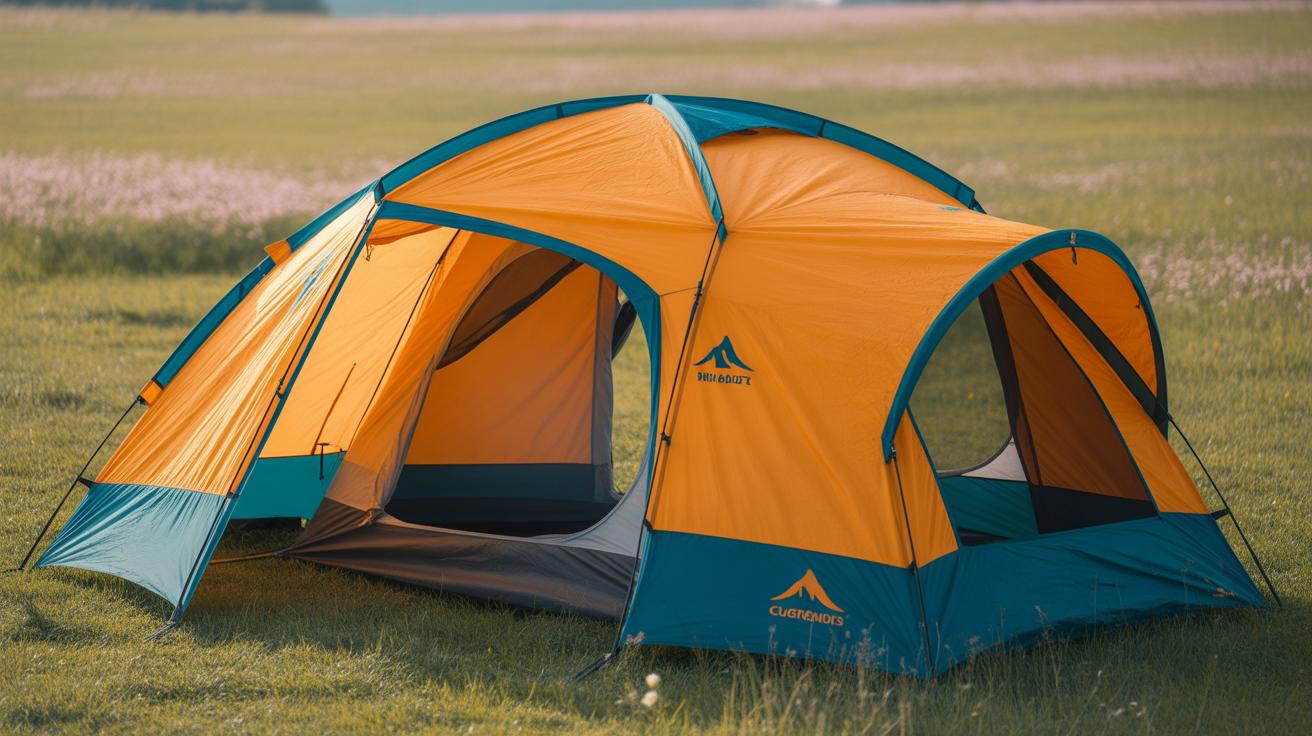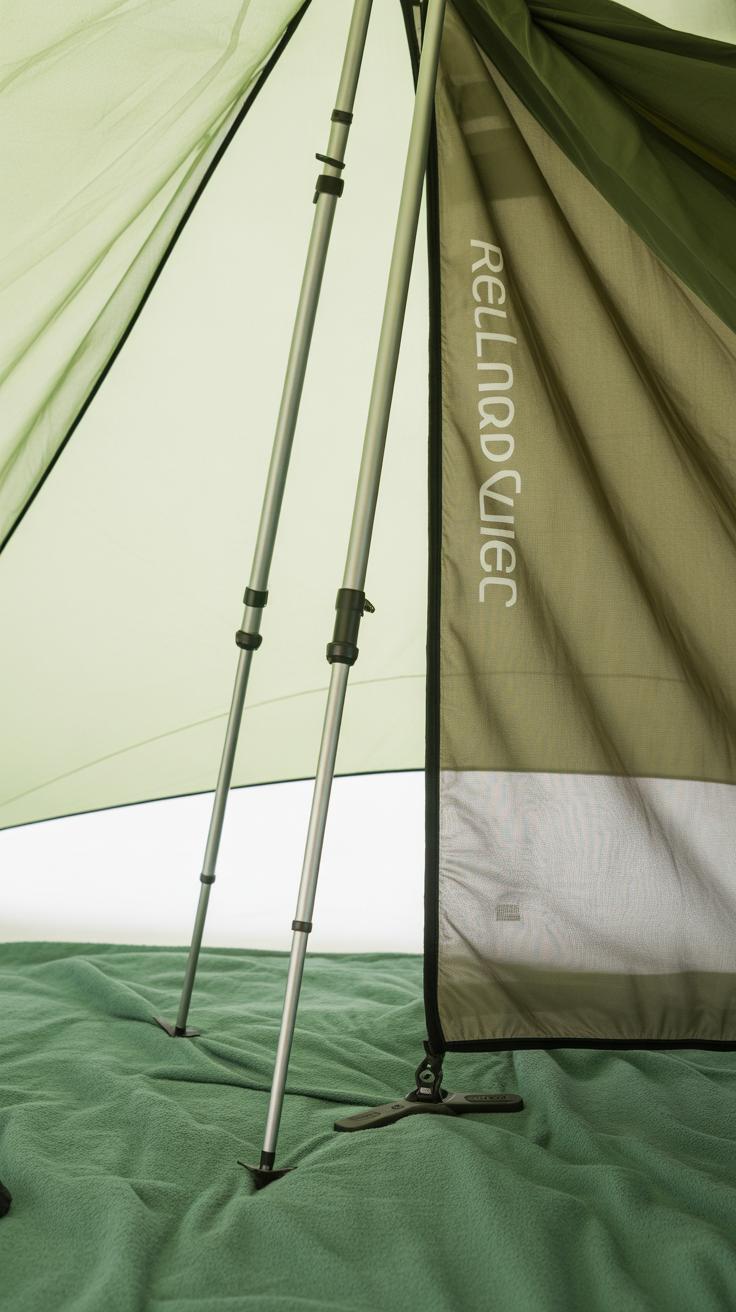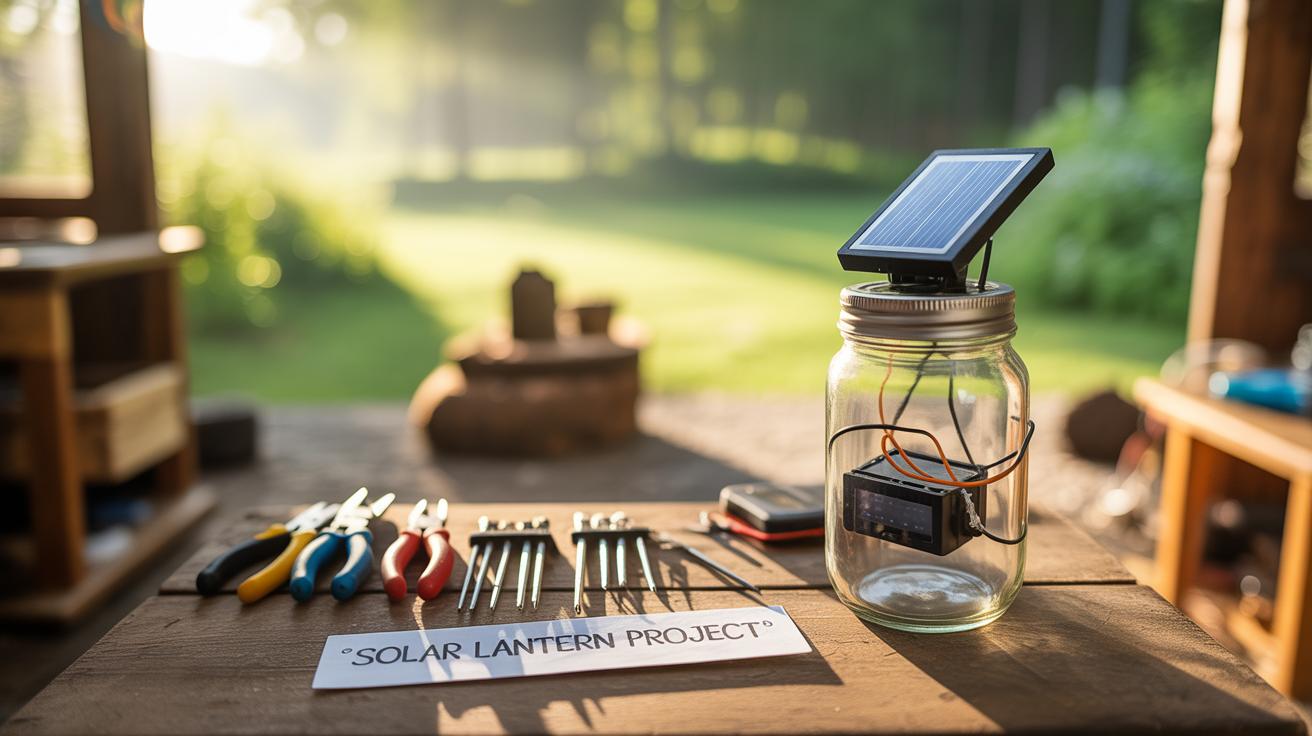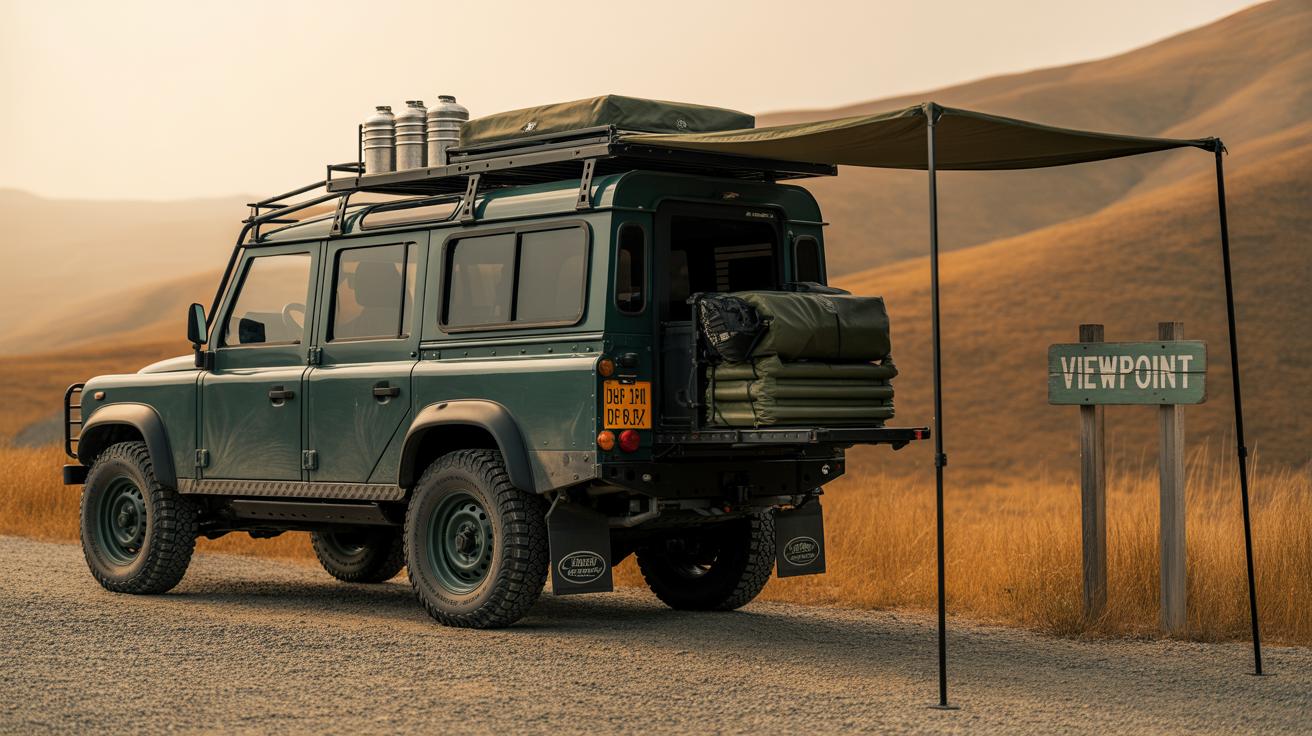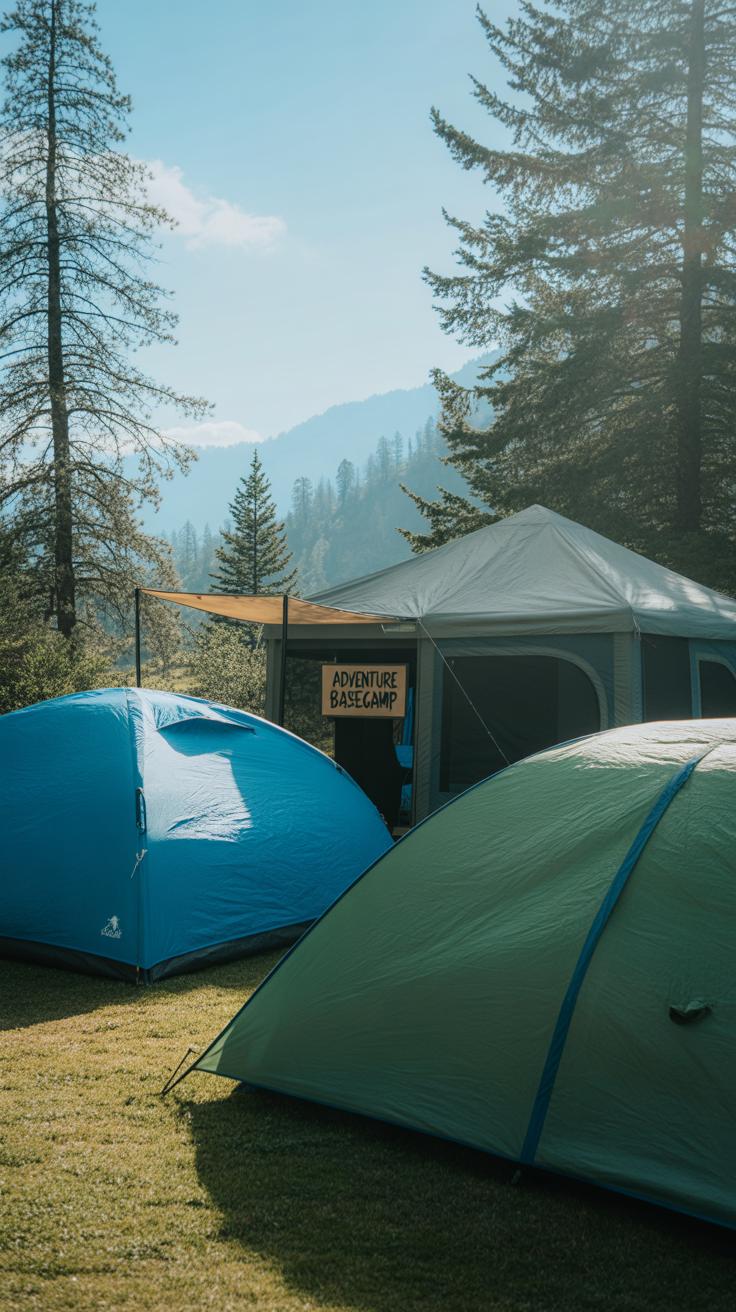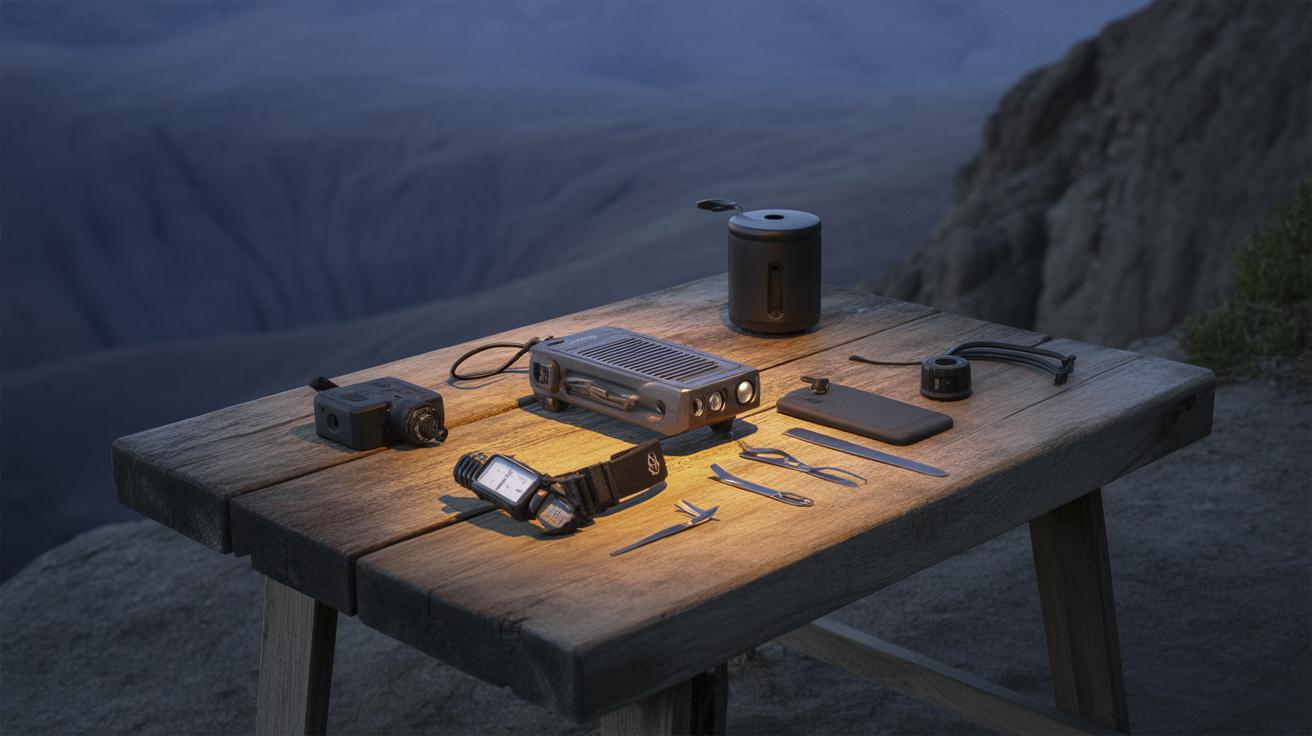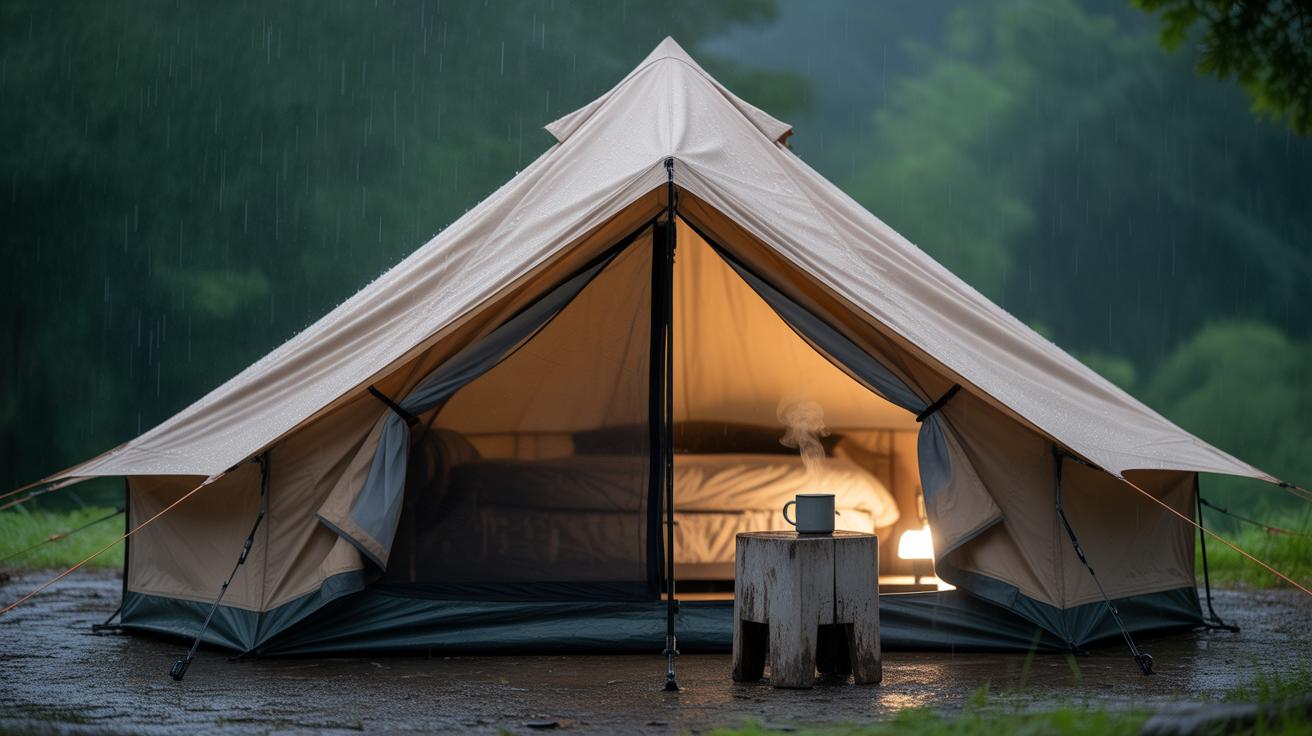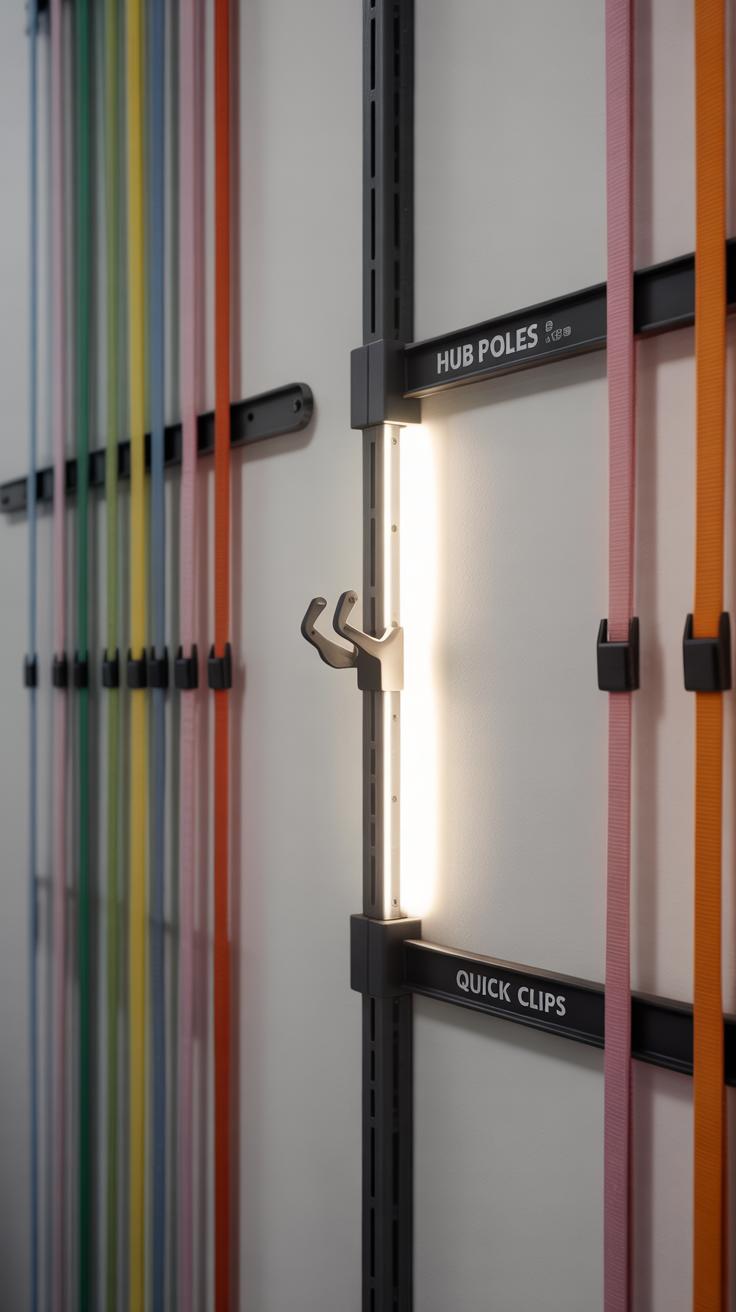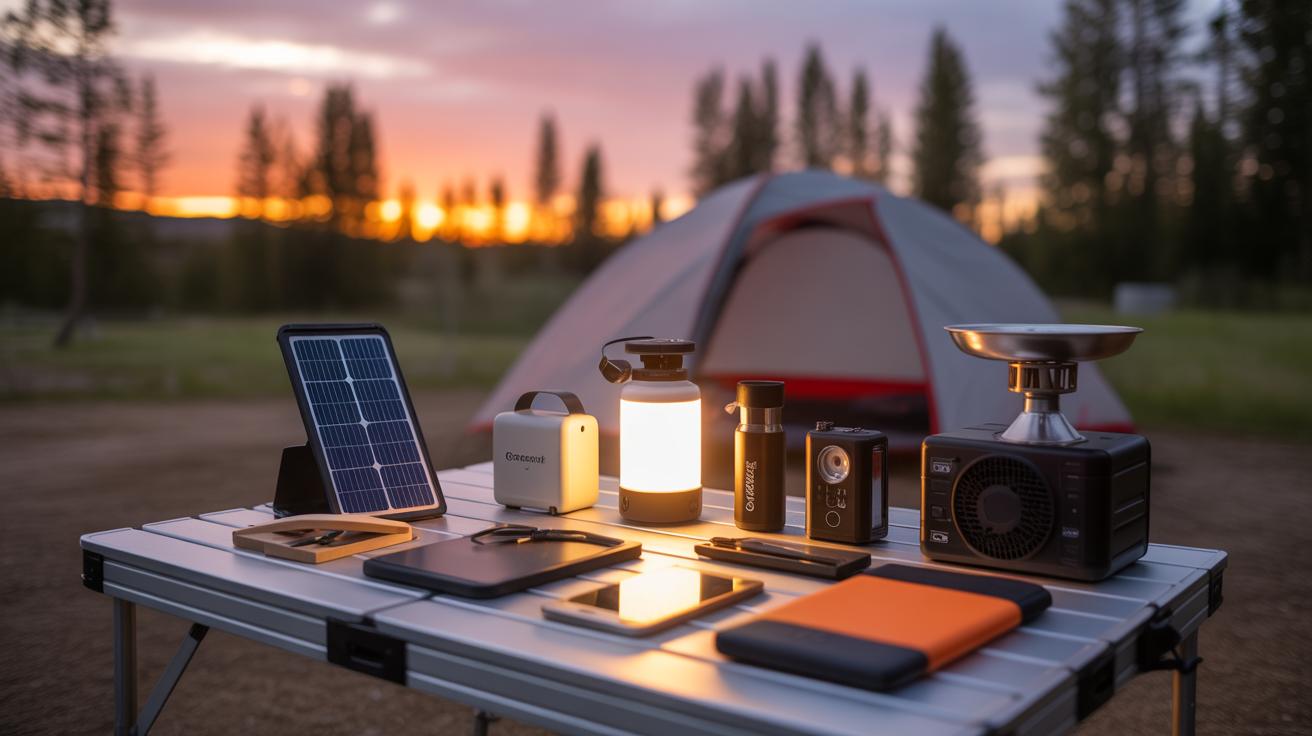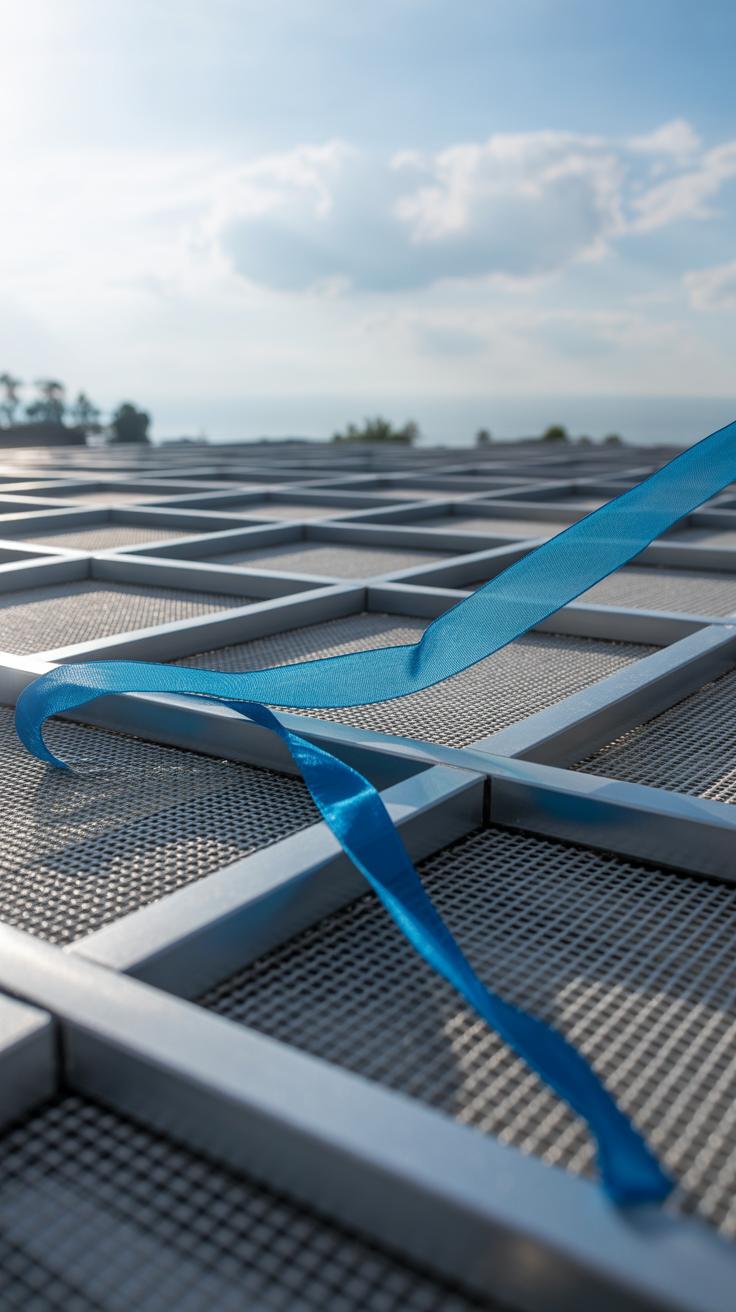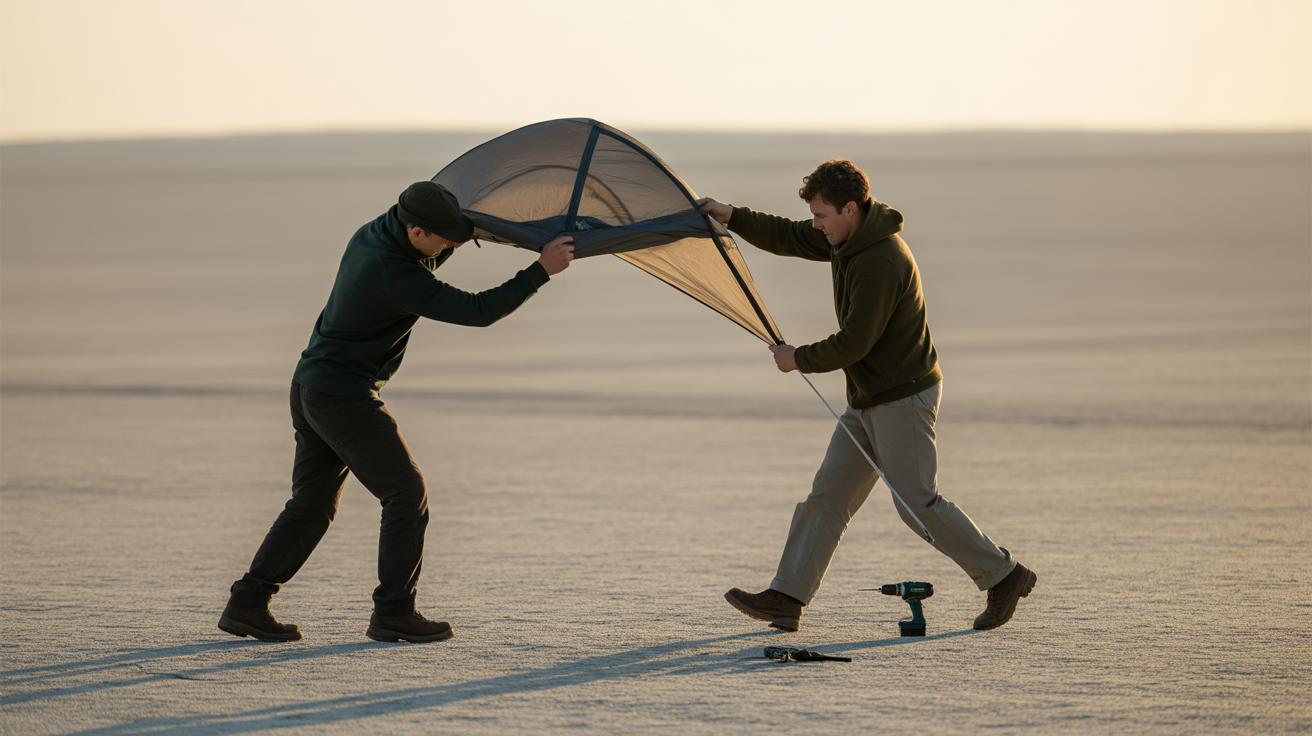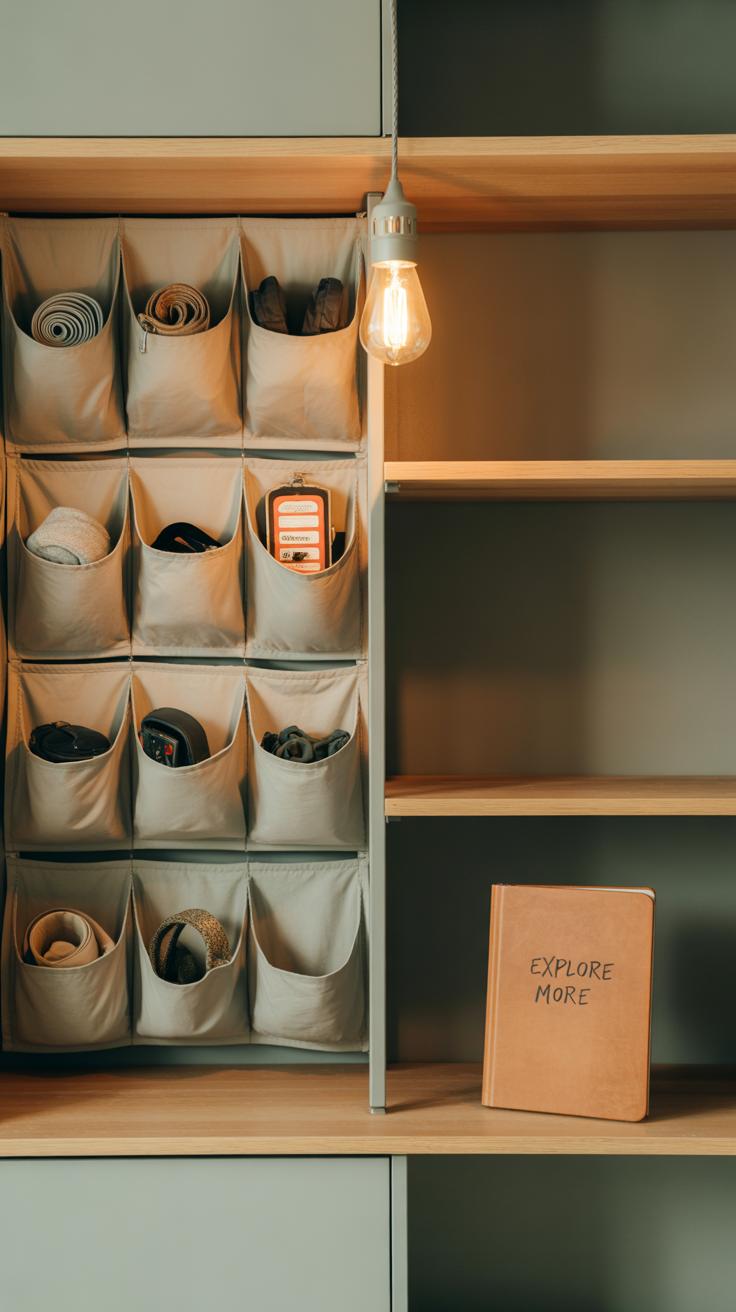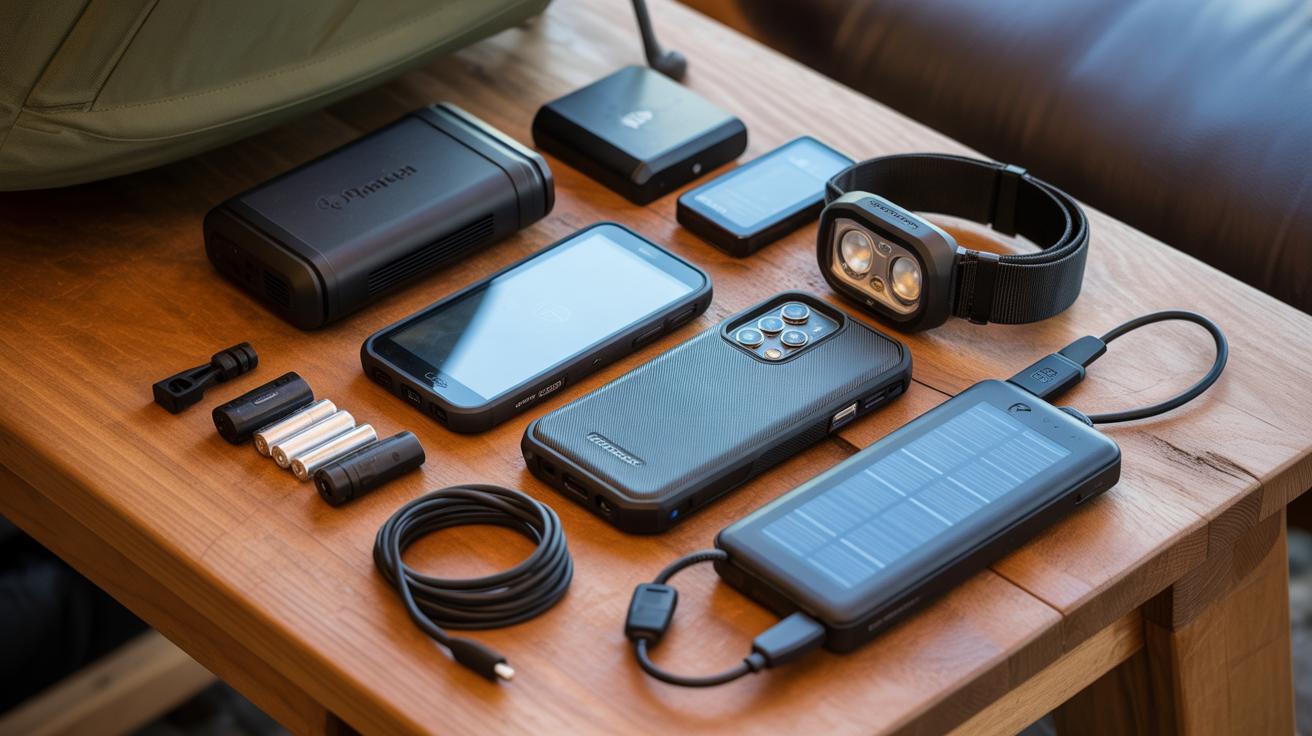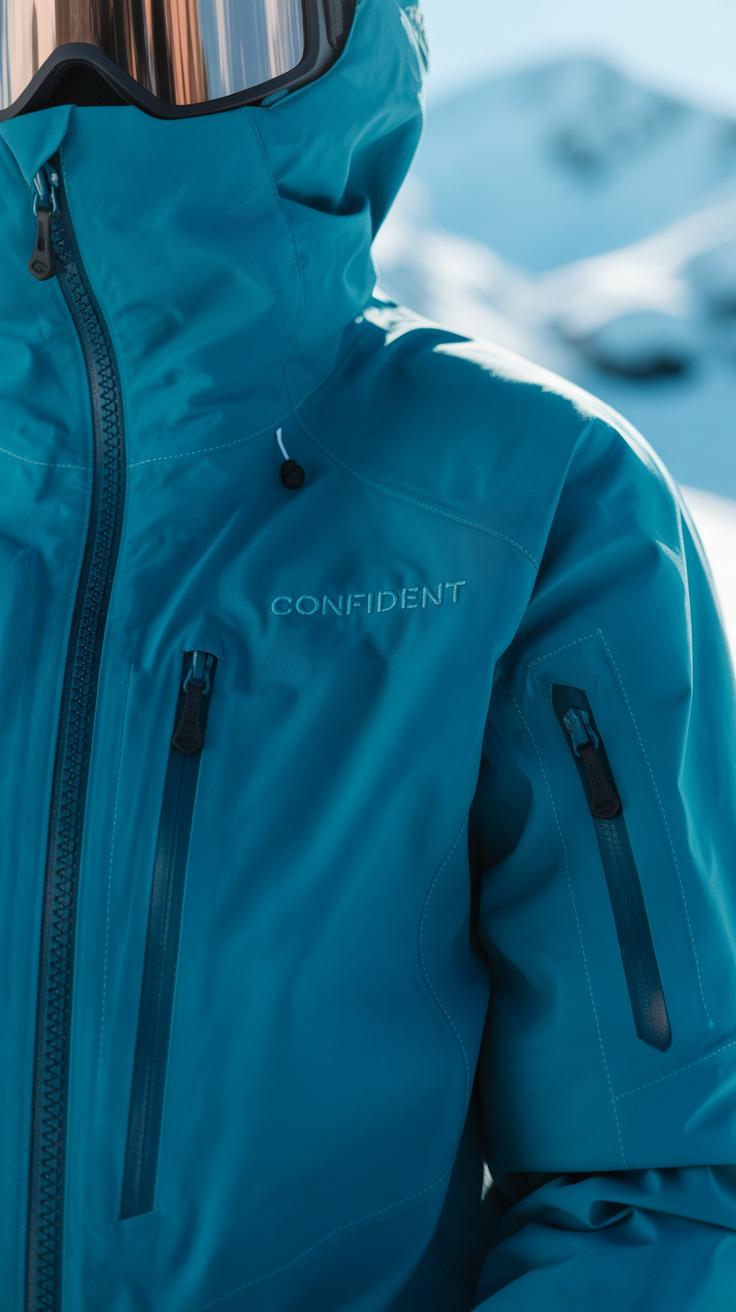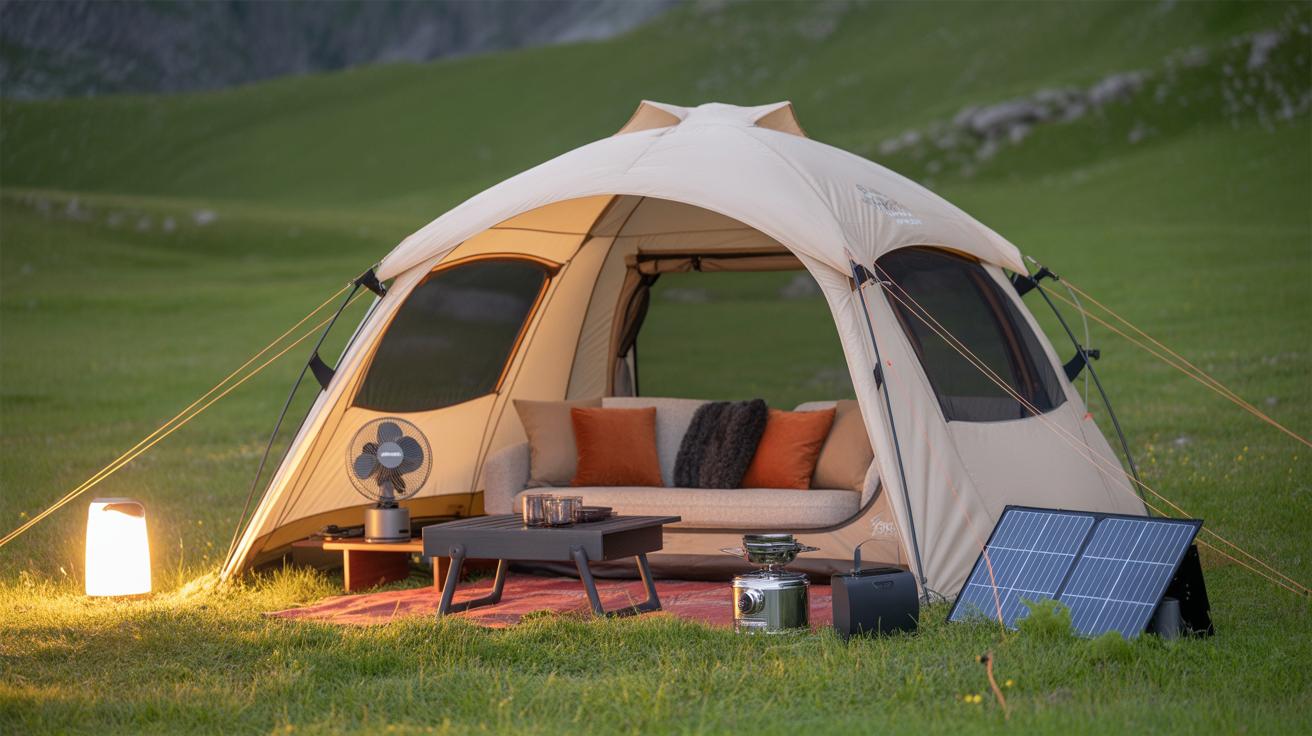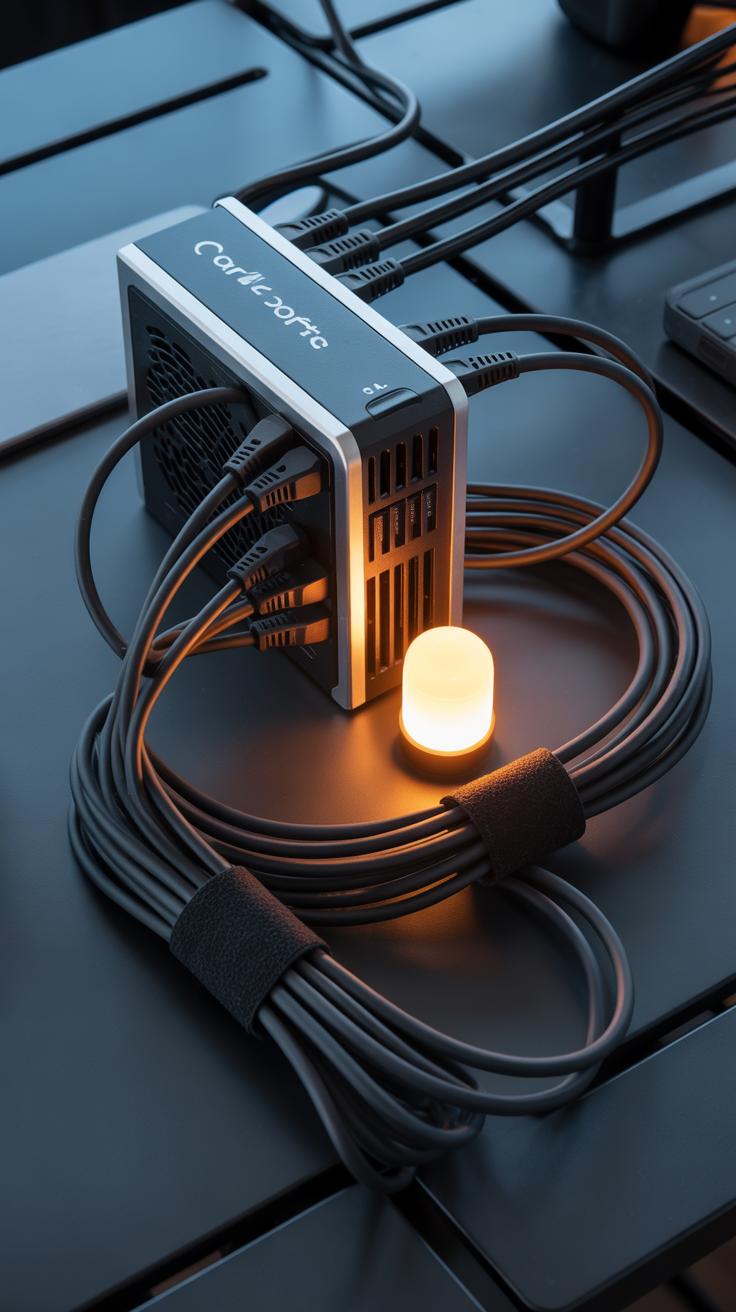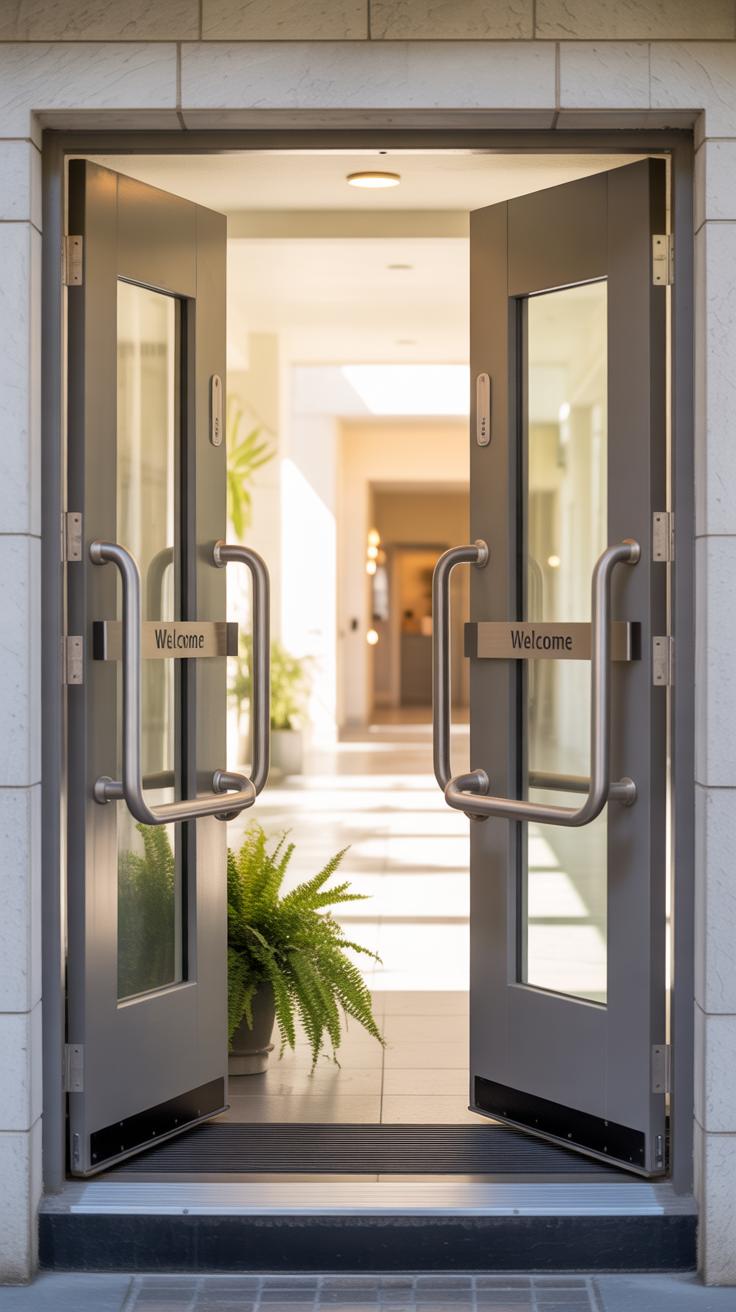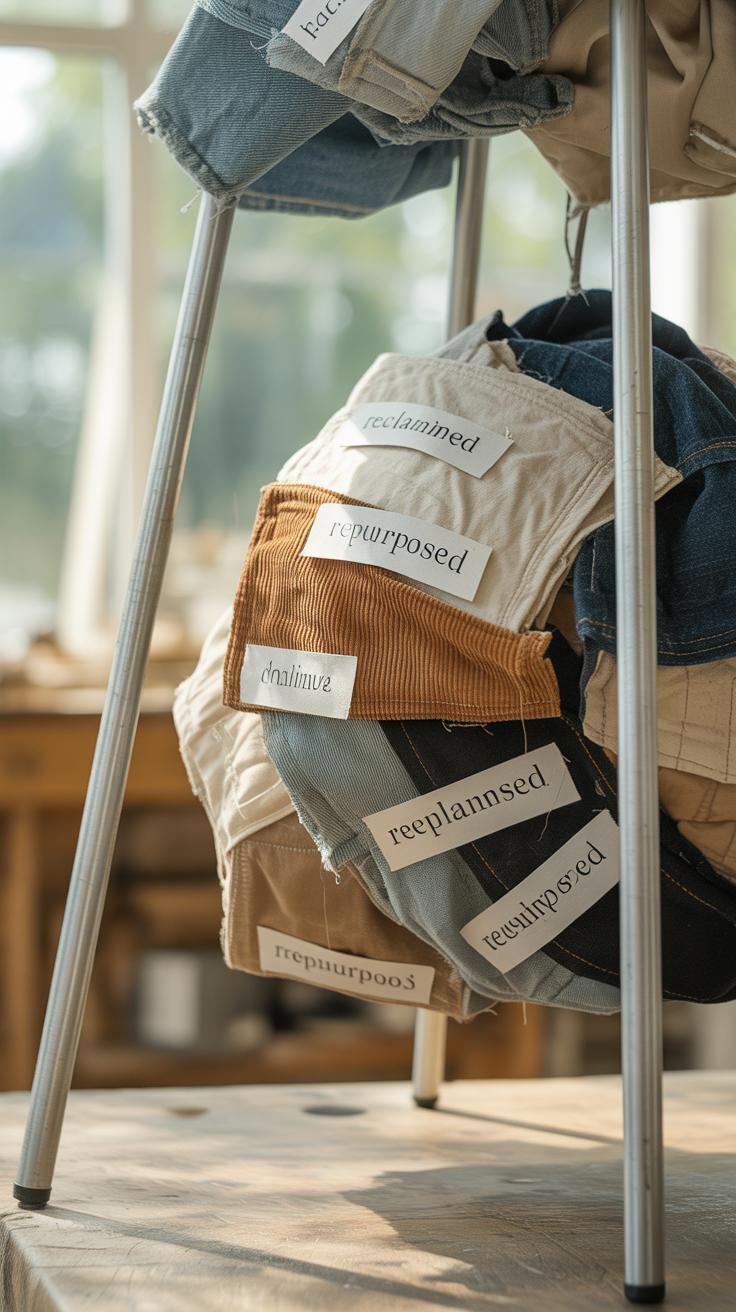Introduction
Tent design has evolved significantly to improve the camping experience. When you head out to camp, the tent is your shelter and comfort hub. Innovations in tent structure and materials aim to make your camp life easier, more comfortable, and efficient.
This article explores the main tent design innovations that help you set up quickly, stay protected, and enjoy your outdoor adventures more. Understanding these features will help you choose tents that suit your needs best and make camping a hassle-free experience.
Material Choices That Enhance Durability and Comfort
When picking a tent, material really shapes how it performs in the field. You’ll often see nylon, polyester, and canvas leading the options—each comes with its own mix of strengths and quirks. Nylon tends to be lightweight and strong, which makes it a favorite for backpackers who toss their tents into their packs and hit the trail. Polyester, while a bit heavier, resists stretching when wet and holds up well against UV damage. Canvas feels almost old-school but offers great durability and breathability—you’ll find it in heavier duty models suited for longer stays or rough weather.
Thinking about waterproofing, the fabric’s weave and coatings count just as much as the base material. Nylon and polyester usually get silicone or polyurethane coatings that repel water, but that can add some weight. Canvas naturally absorbs moisture but swells to seal seams tighter; it’s almost like nature’s own waterproofing, if you don’t mind the extra mass.
Choosing the right fabric affects more than just weight or water resistance—it changes how comfortable you feel inside the tent too. Breathable canvas tents often avoid that clammy, sweaty feeling you get in synthetic shells overnight. But synthetic materials can dry fast after a rainstorm, which sure beats waiting around for canvas to air out. I’ve camped in both types, and honestly, each has moments where it shines and others where it feels less ideal.
Waterproof and Breathable Fabrics
Keeping water out while letting moisture out is a tricky balance. If your tent traps condensation inside, you might wake up to damp gear, even if it didn’t rain. To address this, manufacturers use fabrics treated with coatings that block water droplets but allow water vapor to escape. Think of it like a selective filter. Silicone coatings improve water resistance and add durability, but can sometimes reduce breathability slightly.
There’s also polyurethane coatings that do the job well but tend to be heavier and less breathable. Some tents combine these layers with mesh vents and design features to encourage airflow and prevent condensation. Choosing fabrics and features that manage moisture well can mean waking up dry and feeling fresh, which is kind of a big deal when you’re camping multiple nights.
Lightweight Versus Heavy Duty Fabrics
If you backpack, you’ll likely want lightweight fabrics like ripstop nylon. These keep your pack manageable—sometimes weighing just a few pounds for a two-person tent. They’ll sacrifice a bit of toughness but gain portability and easier setup. On the other hand, if you’re car camping or expecting harsh weather, you might trade some weight for sturdier polyester or canvas fabrics.
Heavy duty tents often come with thicker weaves and more layers of coating or insulation. They handle wind, abrasion, and repeated use better. But when you’re hiking miles to your spot, lugging a heavy tent can get old fast. Think about where you camp and what weather’s usual before selecting fabric. If you spend most nights in one place, durability might be worth the extra pounds. Otherwise, a lighter tent can keep you moving comfortably—and that’s something you don’t want to overlook.
Tent Shapes and Their Practical Benefits
Common Tent Shapes and Their Pros and Cons
Tent shapes vary a lot, and each has its own take on space, wind handling, and pitching ease. Dome tents, for example, rely on intersecting poles to create a rounded, squat shape that’s great for wind resistance. They hold up well in gusts because winds just flow over them. But while they offer decent floor space, the sloping walls can cut into usable headroom near the edges. Pitching a dome is usually straightforward, which makes it popular among casual campers.
A-frame tents have that classic triangular profile from front to back. They tend to be lighter and easy to set up but don’t excel in space—especially headroom, since the steep sides limit standing area. Wind resistance can be a mixed bag, working well head-on but less so from the sides. Still, if you want simplicity and something small, these might work well.
Pyramid tents take a single central pole to support a tall, steep profile. They’re excellent if you want a lightweight option for backpacking. The design sheds wind and rain effectively, but the central pole can eat into interior space. Setting these up requires a bit of practice, which might be a drawback if you’re not used to it.
Tunnel tents stretch out like a long tube, supported by multiple poles in sequence. They offer great floor space and standing room, especially good for families or groups. Winds hitting the side can be challenging, as long, flat walls catch gusts harder. Pitching isn’t usually tricky but does take a bit more time than dome tents.
Why Dome Tents Are a Favorite
Dome tents strike a balance between stability and space that a lot of folks appreciate. The way their poles cross gives a solid framework that flexes in the wind without tipping over easily—something you really notice on blustery nights. They’re roomy enough inside for sitting and moving around comfortably, often more so than A-frame tents.
I’ve found dome tents just work in most scenarios—you can take them to camping spots with fickle weather or on casual trips where setting up quickly matters. That’s probably why many campers have one in their gear, even if it’s not perfect for every situation.
Special Shapes for Specific Needs
Some tents are designed with a particular style of camping in mind. Pyramid tents, for example, appeal a lot to ultralight backpackers who want to shave every ounce off their pack. Their compactness and simple pole system keep weight down but can feel a bit cramped inside.
On the other hand, long tunnel tents cater to groups or families who spend more time inside. They offer generous floor space and separate areas for sleeping and gear—something that matters when camping with others. They’re not the best when it gets really windy from the side, but for calm weather expeditions, they’re comfortable and practical.
Choosing the right shape often boils down to what kind of trips you take. Maybe you want to hike fast and light, or perhaps you need a roomy spot for several people. Thinking about how you’ll use the tent can help narrow down the options far more than just picking what looks cool on the shelf.
Speedy Setup and Breakdown Innovations
Setting up a tent can sometimes feel like a chore, especially when the weather turns sour or daylight is fading fast. That’s where features like pop-up designs, color-coded poles, and quick-clip systems come in, cutting down the time and fuss involved.
Pop-Up and Instant Tents
Pop-up tents use flexible frames pre-attached to the fabric, which instantly spring into shape when you unfold them. You basically toss the folded tent on the ground, and it kind of just… flips open on its own. This makes setting up surprisingly quick, sometimes in under a minute. They work best for casual camping, festivals, or short getaways where convenience trumps long-term durability.
But there’s a trade-off. Pop-ups can be harder to pack back into their bags, and their size tends to be limited. They also might not handle strong winds or heavy rain as well as more traditional tents. Still, if you’ve ever struggled to assemble poles when the rain starts, you might appreciate the simplicity they offer.
Helpful Pole and Clip Systems
Many modern tents use clear color-coded poles and matching sleeves or clips. This reduces guesswork. You don’t have to read a manual while fumbling in the dark because the red pole slides neatly into the red sleeve, blue with blue, and so on.
Quick-clip systems attach tent fabric to poles with plastic hooks rather than threading poles through sleeves. This speeds up pitching and makes adjustments easier when the wind picks up or terrain shifts. For first-time users, a good tip is to lay everything out first, match colors, and loosely attach clips before standing the tent up — it saves frustration.
Overall, these setup improvements bring a bit more ease and less stress. They keep you focused on camping itself, not wrestling the gear.
Ventilation Systems to Reduce Condensation
Keeping the inside of your tent dry and comfortable often hinges on how well it breathes. You might not give ventilation much thought until you wake up with damp gear or a foggy tent wall. Condensation forms when warm, moist air from your breath and sweat meets the colder tent surface. Good ventilation helps air circulate, cutting down moisture buildup.
Mesh Panels and Windows
Mesh panels serve a dual purpose: they let air flow freely while blocking pesky insects. I’ve noticed tents with large mesh doors feel noticeably less stuffy—especially during warmer nights. Placement matters—a front door with mesh is common, but side and roof panels bring airflow from different angles, which helps stir the air better.
Size matters here, too. Smaller panels can leave the tent feeling cramped; bigger mesh windows, sometimes with zip covers, give you control. You can unzip to sleep under the stars or keep bugs out when the breeze picks up.
Adjustable Vents and Their Usage
Adjustable vents add flexibility. Some are located near the floor or on the rainfly, letting you fine-tune how much air comes in and goes out. It’s practical—you might want them fully open on dry, warm nights but closed during a chilly drizzle. I’ve camped with tents that had vent flaps you can reach from inside—a small but appreciated feature when it’s too cold to unzip the door.
Ease of access is a real plus. When vents are awkwardly placed, you just end up leaving them fixed, which kind of defeats the point. Ideally, vents should be easy to adjust without getting out of your sleeping bag. That way, managing airflow becomes part of cozy camp life, not a hassle.
Smart Storage Solutions Inside Tents
Inside tents, storage often gets overlooked, but it shapes your entire experience, I think. Internal pockets, for example, provide handy spots to stash small essentials like your headlamp, phone, or keys. They’re usually sewn into tent walls at reachable heights, so you don’t have to fumble around or wake someone up digging through your bag.
Gear lofts—a kind of mesh shelf attached near the tent ceiling—offer extra room for light items. You might toss in glasses or a map there. It keeps things off the floor and away from moisture, which matters if the ground’s damp. You may wonder if those lofts get in your headspace, but in most tents, they remain unobtrusive.
Vestibules appear as covered extensions just outside the main tent area. They’re perfect for muddy boots, backpacks, or cooking gear. Keeping these outside the sleeping area minimizes clutter and dirt inside, which indirectly raises comfort—you won’t stumble over stuff in the dark, or pack dirt onto your sleeping pad.
- Internal pockets create quick access zones for small items.
- Gear lofts free up floor space and protect gear from moisture.
- Vestibules keep dirty or bulky items outside but sheltered.
Think about how much less stressful it is when everything has its place. Less clutter means fewer chances of losing important items or tripping inside your shelter. And that sense of order—well, it quietly improves your whole camping mood, even if you don’t notice it while setting up.
Enhanced Weather Protection Features
When it comes to camping, weather can turn from pleasant to challenging fast, and your tent’s design plays a crucial role in keeping you dry and secure. Rain flies are the first line of defense against rain. They don’t just cover the tent’s roof; they often extend past the doors and windows, creating a little extra shield that diverts water away. Some tents even have multi-layer rain flies to boost coverage. I’ve noticed how a well-fitted rain fly can make a big difference—less dripping inside means a more restful night, no doubts about that.
But rain flies alone don’t stop all leaks. That’s where waterproof seams come in. These seams are treated or taped to seal needle holes from stitching. Sometimes manufacturers also reinforce those areas with additional waterproof coatings. It might sound technical, but in wet weather, untreated seams are usually the weak spot where water sneaks in. You might think stitching shouldn’t affect water resistance, but it really does. From experience, tents with taped seams hold up way better in steady rain.
Wind is another beast entirely. The shape of your tent can either fight or surrender to gusts. Designs featuring low profiles, often domes or geodesics, perform better by shedding wind rather than catching it. The combination of sturdy pole configurations—like crossing poles or multiple arches—and smart stake patterns help anchor the structure deeply, keeping it stable. One time I camped on a blustery night, and the way my tent poles flexed just enough but didn’t snap felt reassuring. It’s a delicate balance, really.
So, when you’re looking for a tent, consider how these weather-focused features come together. Do the rain flies cover enough? Are seams sealed solidly enough? Can the tent shape and stakes handle gusty conditions at your campsite? Asking these might not guarantee perfect weather, but they sure improve your chances of staying comfortable regardless.
Lighting and Electrical Access in Modern Tents
Lighting inside tents has gone beyond the usual headlamps and flashlights. These days, many tents come with built-in LED lights, often placed on the ceiling or along the walls as strip lights. These light sources tend to be dimmable, so you can avoid blinding everyone when you just need a soft glow to read or get ready for bed. Some tents even include multiple brightness settings, which is handy because sometimes you need more light, sometimes less.
The power for these lights usually comes from rechargeable batteries or detachable power packs. Solar-charged options are popping up too, perfect when you want to stay off the grid entirely. I once camped with a tent that had LED strips powered by a small solar panel. It wasn’t bright enough for detailed tasks but enough to move around safely in the dark.
When it comes to charging devices or running small electrical gear, modern tents often come with built-in ports or access points. You might find a USB or power outlet port, which lets you run cables inside without leaving zippers open. This setup keeps things neat and helps seal out bugs.
Some designs even consider solar compatibility, allowing you to connect portable solar panels directly to the tent’s charging hub. This setup is great for longer stays or solitude, though the actual power output can be limited—so, don’t count on running big appliances.
Lantern hooks are a simple but effective feature. Hanging a lantern inside keeps it off the ground and spreads light better across the tent’s interior. It prevents accidental knocks, which can be a lifesaver when you’re fumbling in the dark.
Overall, these lighting and power features improve safety and convenience after dusk. You can move around with confidence, charge essential gear without hassle, and keep your tent well-lit without carrying extra batteries or bulky lamps. Have you noticed how much easier things get just by adding some integrated lighting and power options? It’s a small change that, I think, really changes the whole camping experience after sundown.
Accessibility and User Comfort Innovations
Wide Doors and Easy Access
One feature that can make a huge difference is the size of the tent’s doors. Larger doors with smooth, sturdy zippers mean you don’t have to struggle getting in or out—no awkward crouching or maneuvering. For families juggling gear and kids, this is a small but welcome relief.
Older campers or anyone with mobility challenges benefit a lot from these roomy entrances. Imagine not having to squeeze through tight flaps or step over high thresholds every time you need a break. Some tents even offer doors that open wide enough to accommodate wheelchairs or walkers, which, frankly, you don’t see often enough.
Sometimes it’s easy to overlook how much stress a small, cramped entrance adds. But with a well-designed wide door, the tent feels less like a barrier and more like a natural extension of your camping space.
Interior Comfort Adjustments
Inside the tent, features like adjustable ventilation panels can really change the game. You can open or close them to control airflow depending on the weather, which means fewer stuffy nights or drafts chilling you unexpectedly. It’s sort of like customizing the tent’s atmosphere without packing extra fans or heaters.
Removable floor sections might seem odd at first, but they offer practical benefits. You can peel back certain parts for cleaning easier or to enjoy a little fresh grass through mesh screens—imagine that subtle connection to nature, right beneath your feet, without bugs sneaking in.
Then there are awnings that extend over doorways or windows, giving you extra shade or rain protection. Sitting just outside your tent, shielded from sun or drizzle, changes how long you want to stay outdoors comfortably. Those small changes add up, making camp life feel less primitive and more like a choice rather than a challenge.
EcoFriendly Tent Design Trends
Tent makers are slowly shifting toward greener choices, and that’s pretty encouraging if you care about the environment while camping. You’ll find more tents made with recyclable fabrics like recycled polyester or nylon, which cut down waste and keep less plastic out of landfills. These fabrics often come with coatings made from less toxic chemicals. Instead of the usual heavy-duty fluorocarbons, some brands experiment with silicone or polyurethane treatments that still repel water but don’t hang around as harmful residues.
Besides materials, the way tents are designed also matters. Look for tents built with modular parts. That means if one pole breaks, you swap it out yourself, instead of tossing the whole tent. Repairable tents reduce how often you replace gear, which, in the long run, is better for nature and your wallet. Also, some companies cut back on packaging — smaller boxes and less plastic wrap — which seems like a small thing, but when multiplied, it reduces a lot of waste.
As a camper, you can support these trends by choosing products from brands that offer repair kits or parts sales and by being okay with a few natural dents or marks instead of always needing pristine gear. Would you trade complex features for simpler, greener materials? It’s a balance worth thinking about when picking your next tent.
Conclusions
Tent design has come a long way with advances in materials, ease of setup, and smart features aimed at campers’ comfort. Considering elements like shape, ventilation, and convenience features helps you pick a tent that matches your camping style.
With better tent designs, you spend less time struggling with your shelter and more time enjoying your surroundings. Remember, the right tent makes your outdoor trips smoother and more enjoyable.

